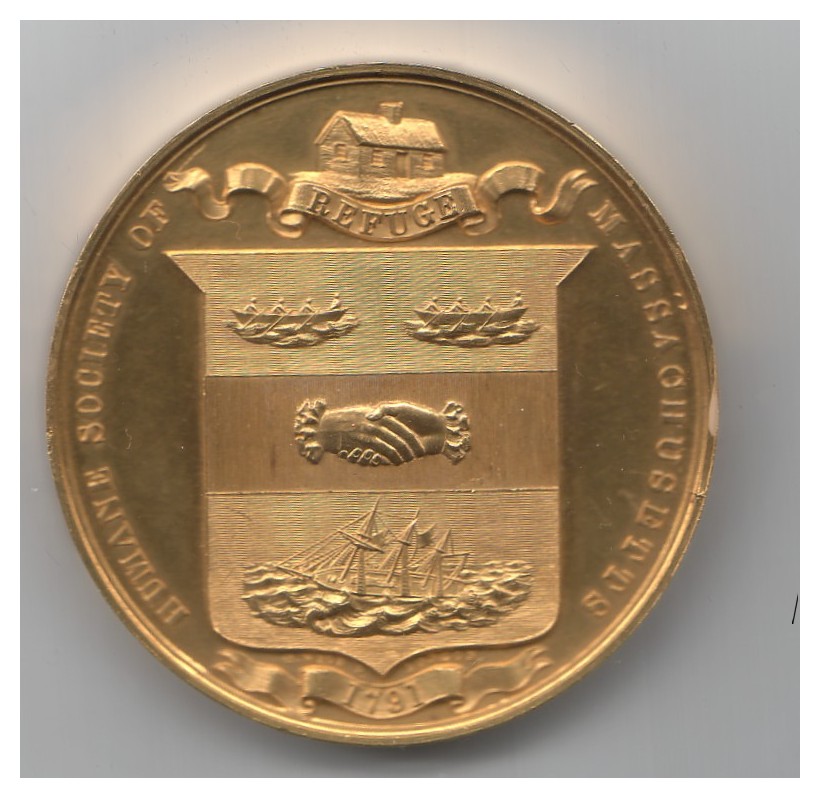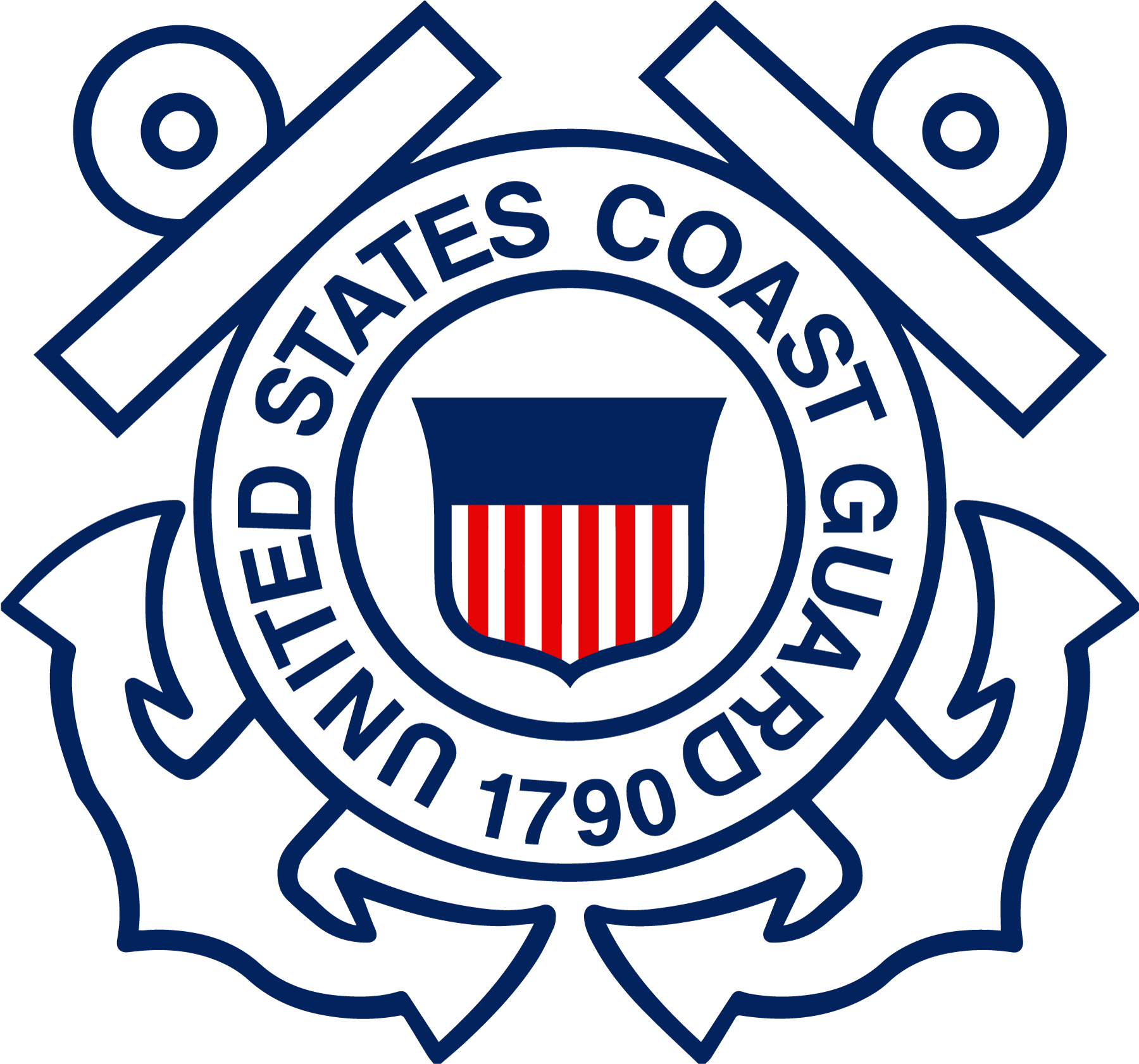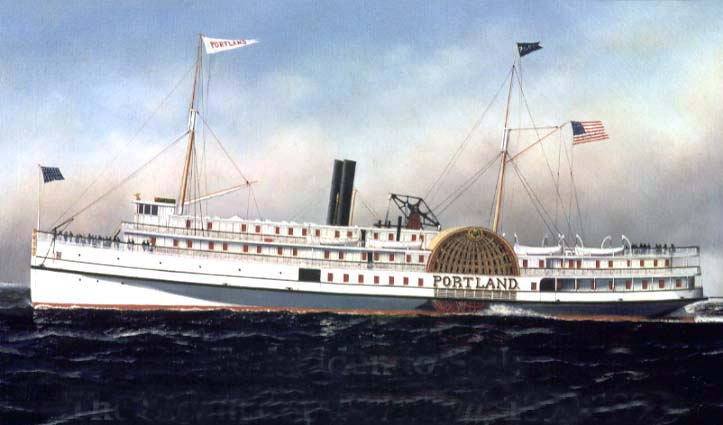Exhibits & Collections
Current/coming ExhibitS
 Nantasket Beach Steamboat Company...
Nantasket Beach Steamboat Company...
when summer was everything
Exhibit Opens July 22
Discover the captivating history of steamer travel with "Nantasket Beach Steamboat Company...when summer was everything". This exhibit promises to immerse visitors in the rich heritage of one of America's earliest steamboat enterprises.
This exhibition is sponsored by Jake's Seafood Restaurant.
 Lifebuoy Saves Lives
Lifebuoy Saves Lives
February 2021 - February 2022
In light of the current COVID-19 epidemic, this collection offers a fascinating look back at attitudes and approaches to sanitation and health as expressed a century ago, when Lifesavers were the symbolic heroes of health.
Past ExhibitS
 Patricia Abbate Retrospective ~ at Joshua's Staircase Gallery
Patricia Abbate Retrospective ~ at Joshua's Staircase Gallery
March 25 - April 24, 2023
Although not a Hullonian by birth, more importantly, Patti was a Hullonian by heart. All who knew Patti personally or admired her photography were touched by her innate sense of the beauty of Hull peninsula and her fiercely loyal admiration of all its inhabitants. The Lifesaving Museum is taking this opportunity to pay tribute to the soul of Patti captured through this retrospective. Come join us so you might also fee that beauty captured through her photography. Follow this link to learn more about her work.
 Crossroads: Change in Rural America
Crossroads: Change in Rural America
October 30 - December 10, 2022
"The Crossroads: Change in Rural America" exhibit offers small towns a chance to look at their own paths to highlight the changes that affected their fortunes over the past century. The exhibition will prompt discussions about what happened when America's rural population became a minority of the country's population and the ripple effects that occurred. Learn more including our program schedule.
 Storm Season ~ Shipwrecks Remembered
Storm Season ~ Shipwrecks Remembered
June 2022 - October 2022
Winter season along the New England coast provides a stark reminder of storms and gales of the past and valiant rescues performed by Humane Society volunteers and the crews of the Point Allerton US Lifesaving Station. With that in mind we dove into the archives to revisit some of the extreme weather events of the past including the Great Storm of 1888, the wreck of the Ulrica in 1896, the Portland Gale of 1898, and the grounding of the Nancy in 1927. The exhibit includes photographs, official documents, postcards, awarded medals and ship fragments from our collections.
 A Life Lived In Color: Trish Turner Retrospective
A Life Lived In Color: Trish Turner Retrospective
September 10 - November 7, 2021
In honor of Trish Turner, a dear and treasured friend of the museum and the community, HLM is hosting a retrospective of her work. We know there are many folks in town who boast at least one "Trish Turner" in the collection. This show is an opportunity to view the larger body of her work, many that convey her zest for life and her wit while capturing iconic local scenes that quite often carried their own personal story for both the artist and the art lover.
Archibishop Williams Middle School Boat Designs
Inspired by a remote tour of the museum's winter show: Miniature Ships - Epic Stories, Model Ship Exhibition, Middle School students from Archbishop Williams School employed mixed media techniques to create an online slide show of their work with accompanying artist statements from each student.
Miniature Ships - Epic Stories, 2020 Model Ship Exhibition
October 2020 - February 2021
Our exciting new exhibition featured ship and boat models from our collection.
Keeping a Weather Eye: Shipwrecks and Lifesaving in Boston Harbor
Keeping a Weather Eye interprets the historic Point Allerton Lifesaving Station in photographs, log book accounts, newspaper articles, artifacts, and film clips, as well as interactive elements for visitors of all ages.
Sea Dogs! Great Tails of the Sea
A traveling exhibit on loan from Mystic Seaport Museum, celebrates the special relationship shared by humans and dogs who live and work by the sea.
Lifebuoy Saves Lives!
Turn-of-the-century advertisements for Lifebuoy soap proclaimed the slogan "Lifebuoy Saves Lives" and featured images of heroic coastal lifesavers.
The Camera's Coast
A sampler of historic coastal New England images from the collections of Historic New England.
 Joshua James
Joshua James
Joshua James (1826-1902) was born in Hull, Massachusetts and lived his entire life in this small seaside town. He lived to be 75, devoting 60 of those years to saving over 1,000 lives from shipwrecks at the mouth of Boston Harbor. James and the surfmen from Hull's Massachusetts Humane Society and U.S. Life Saving Service crews were the best in the world - and renowned for their deeds. Amazingly, no one ever died in a rescue in which Joshua James participated. Learn more.
 Nantasket, Massachusetts Humane Society Surfboat
Nantasket, Massachusetts Humane Society Surfboat
Nantasket was a part of the network of volunteer lifesavers and rescue equipment maintained along the Massachusetts coast by the Humane Society. Designed by Joshua James' older brother, Captain Samuel James, Nantasket was styled to handle the heavy surf off Hull's Nantasket Beach. Learn more.
 Great Storm of 1888
Great Storm of 1888
On the morning of November 25, 1888, Joshua James spotted six schooners anchored in Nantasket Roads, a half mile southwest of Boston Light. The first to run aground in the mounting storm was the Cox and Green, which struck rocks in mid-afternoon, half a mile from the Humane Society's boathouse at Stony Beach. The breeches buoy was used to rescue all eight sailors aboard. Learn more.
 Point Allerton US Lifesaving Station - USLSS Era
Point Allerton US Lifesaving Station - USLSS Era
The Point Allerton US Lifesaving Station was constructed in 1889 to provide coastal lifesaving services in Boston Harbor. The original building is an A.B. Bibb #2 Type U.S. Lifesaving Station, the first new station design of architect Albert Buruley Bibb, who designed four station plans and two one-of-a-kind stations in
his career with the Lifesaving Service. Learn more.
 USCG Era
USCG Era
Keeper William Sparrow commanded the Point Allerton Station through its transition to the U.S. Coast Guard in 1915. Point Allerton Station is one of the busiest and most distinguished in the northeast. Learn more.
 Research Collections
Research Collections
The museum's collections number more than 5,000 objects, and continue to grow. Our collections include United States Lifesaving Service and Massachusetts Humane Society artifacts, a beach cart, the c. 1887 surfboat Nantasket, lighthouse artifacts, including a rare 1903 Fourth Order Fresnel lens, ship and lighthouse models, ship fittings, shipwreck fragments, aids to navigation and historical charts. Learn more.
 United States Lifesaving Service
United States Lifesaving Service
Congress first debated federalizing a lifesaving service following the horrific 1837 loss of the Barque Mexico with 116 Irish immigrant passengers, mostly women and children, off the New Jersey coast. Instead, legislators sporadically funded regional lifesaving efforts for several decades. Learn more.
 Humane Society of the Commonwealth of Massachusetts
Humane Society of the Commonwealth of Massachusetts
The Massachusetts Humane Society, modeled on Britain's Royal Humane Society, was established by an act of Congress in 1796. The Massachusetts Humane Society was an all-volunteer, purely humanitarian organization. Learn more.
 United States Coast Guard
United States Coast Guard
For more information on Coast Guard history please visit the Coast Guard Historian's website. Learn more.
 Edward Rowe Snow
Edward Rowe Snow
Slideshow: Edward Rowe Snow's Boston Harbor Ramblers
The Museum's Edward Rowe Snow collection includes books, newspaper articles, photographs, and original documents by the popular Boston Harbor historian and author. Many of these materials related to Snow's role as "Flying Santa," delivering gifts to lighthouses along the coast. Please call to arrange research access to this collection.
famous rescues
 Portland Gale
Portland Gale
The Portland Gale of November 26-28, 1898, one of the most devastating storms in the history of the Massaschusetts coast, bears the name of the steamer Portland, lost with all souls after leaving Boston Harbor for Main. The shores of Hull also saw loss of life during the Portland Gale, despite the tireless efforts of the Hull lifesaving crews. The following ships were among those wrecked off Hull during the storm.
Abel B. Babock Read more.
Henry Tilton Read more.
Calvin Baker Read more.
 Wreck of the Ulrica
Wreck of the Ulrica
Bound from Nova Scotia to Hoboken New Jersey, loaded with plaster. All on board were rescued by the Point Allerton US Lifesaving station crew, led by Captain Joshua James. They were brought to shore in the surfboat Nantasket. Read more.
 Nancy
Nancy
On February 20, 1927, during a severe northeast storm with winds exceeding 70 mph, the Nancy, of Philadelphia, was driven onto the shore. In what proved to be their last rescue in Hull, Massachusetts Humane Society volunteers, lead by Captain Osceola James (Joshua's son), brought all nine crew members safely ashore. Read more.
 Boston Harbor Shipwrecks
Boston Harbor Shipwrecks
To learn more about these famous shipwrecks and daring rescues visit our companion website: Boston Harbor Shipwrecks
Hull Lifesaving Museum | P.O. Box 221, 1117 Nantasket Avenue, Hull, MA 02045 | (781) 925-5433



 Nantasket Beach Steamboat Company...
Nantasket Beach Steamboat Company... online ExhibitS
online ExhibitS Lifebuoy Saves Lives
Lifebuoy Saves Lives Patricia Abbate Retrospective ~ at Joshua's Staircase Gallery
Patricia Abbate Retrospective ~ at Joshua's Staircase Gallery Crossroads: Change in Rural America
Crossroads: Change in Rural America Storm Season ~ Shipwrecks Remembered
Storm Season ~ Shipwrecks Remembered A Life Lived In Color: Trish Turner Retrospective
A Life Lived In Color: Trish Turner Retrospective Joshua James
Joshua James Nantasket, Massachusetts Humane Society Surfboat
Nantasket, Massachusetts Humane Society Surfboat Great Storm of 1888
Great Storm of 1888 Point Allerton US Lifesaving Station - USLSS Era
Point Allerton US Lifesaving Station - USLSS Era USCG Era
USCG Era Research Collections
Research Collections United States Lifesaving Service
United States Lifesaving Service Humane Society of the Commonwealth of Massachusetts
Humane Society of the Commonwealth of Massachusetts United States Coast Guard
United States Coast Guard Edward Rowe Snow
Edward Rowe Snow Portland Gale
Portland Gale Wreck of the Ulrica
Wreck of the Ulrica Nancy
Nancy Boston Harbor Shipwrecks
Boston Harbor Shipwrecks


